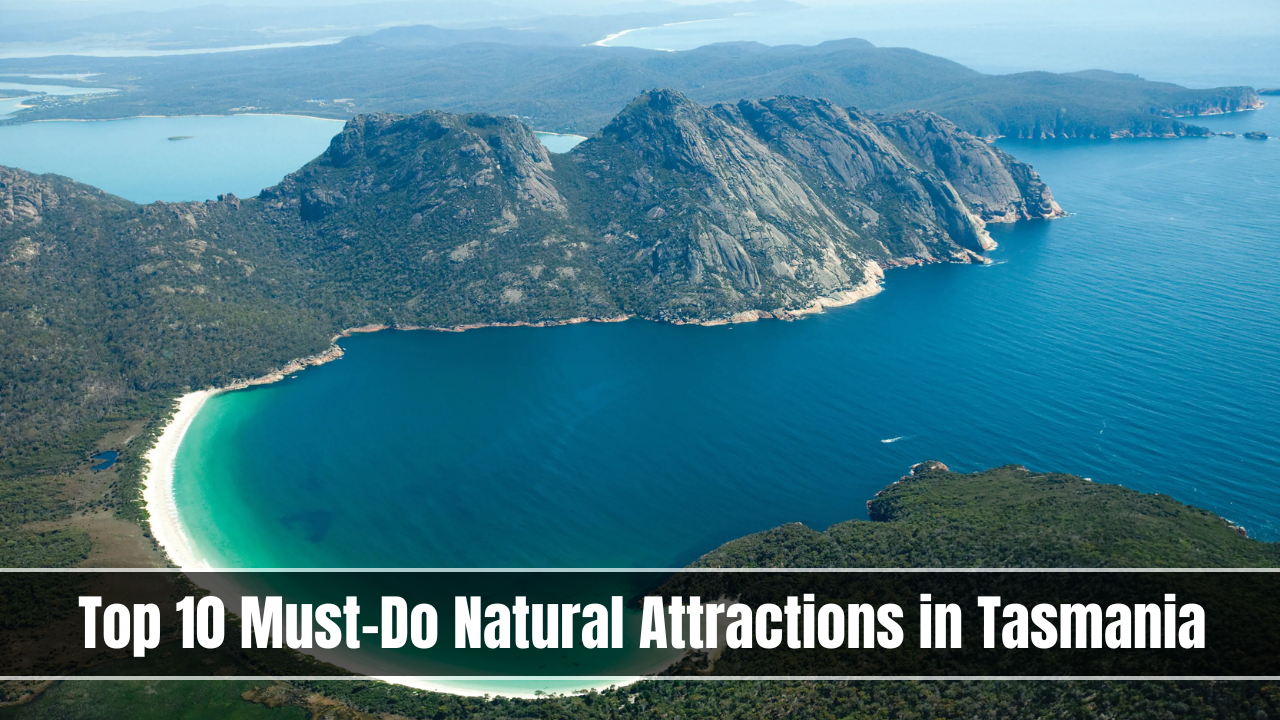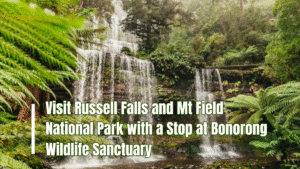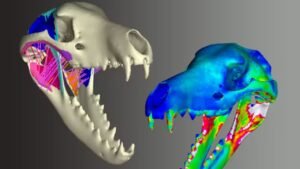Introduction
Tasmania, an island off the southern coast of Australia, is a paradise for nature lovers. With its unspoiled landscapes, breathtaking wilderness, and rich biodiversity, Tasmania offers some of the best natural attractions in the world. From rugged mountains to pristine beaches, and temperate rainforests to serene lakes, there’s no shortage of natural wonders to explore. Whether you’re a seasoned adventurer or someone looking to reconnect with nature, Tasmania’s natural beauty will captivate your heart.
This article will explore the top 10 must-do natural attractions in Tasmania, each showcasing the island’s incredible landscapes and diverse ecosystems. Whether you’re an outdoor enthusiast, a photographer, or someone simply seeking tranquility, Tasmania has something to offer. From the towering peaks of Cradle Mountain to the untouched shores of Wineglass Bay, these natural wonders will leave you in awe.
1. Cradle Mountain
Cradle Mountain is one of Tasmania’s most iconic and visited natural attractions. Located in Cradle Mountain-Lake St Clair National Park, it is known for its dramatic alpine scenery, diverse wildlife, and outstanding hiking opportunities.
Key Features:
- Cradle Mountain Summit: The challenging summit hike offers stunning panoramic views of the surrounding wilderness.
- Dove Lake: A serene spot perfect for photography, with reflection views of the mountain.
- Wildlife: Home to a wide variety of animals, including wombats, wallabies, and the iconic Tasmanian devil.
- Best Time to Visit: Summer (December to February) for mild weather, or during autumn (March-April) for the incredible fall foliage.
Tips:
- The Overland Track, a 65-kilometer multi-day hike, is a popular choice for trekkers.
- Be prepared for rapidly changing weather conditions.
2. Wineglass Bay
Wineglass Bay, located in Freycinet National Park, is often regarded as one of the most beautiful beaches in the world. The beach is famous for its crescent-shaped bay, white sand, and crystal-clear waters, nestled between rugged hills.
Key Features:
- Wineglass Bay Lookout: A short hike from the car park gives you a stunning panoramic view of the bay.
- Beach Access: The hike down to the beach itself is moderate, and the bay is perfect for swimming and kayaking.
- Wildlife: You can spot sea eagles, wallabies, and other local fauna.
Tips:
- The Wineglass Bay Circuit walk takes approximately 4 hours and is one of the best ways to experience the area.
- Always check weather conditions before heading out, as coastal weather can change quickly.
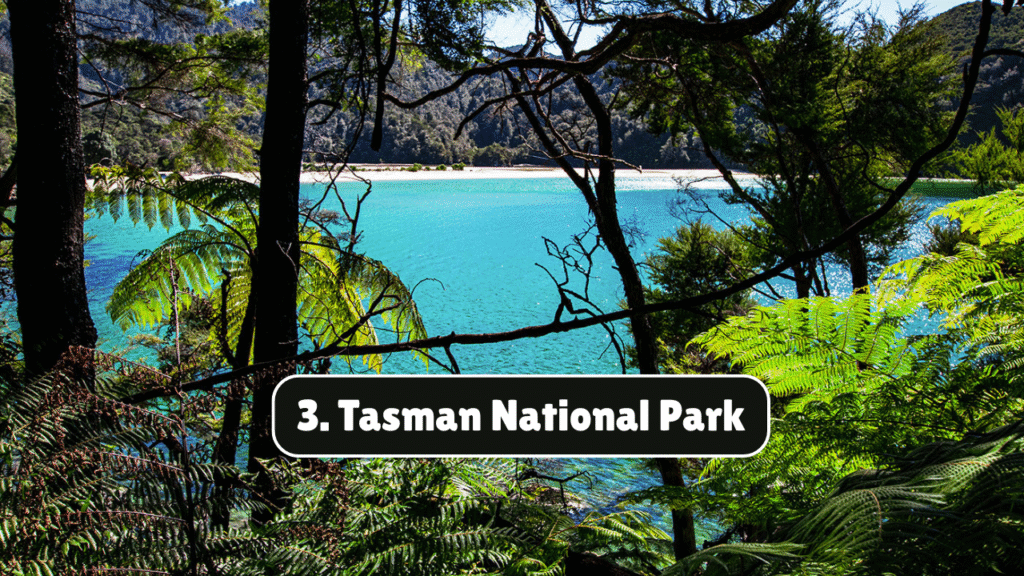
3. Tasman National Park
Tasman National Park is famous for its dramatic coastal cliffs, deep gorges, and fascinating rock formations. The park’s sheer cliffs are some of the tallest in the Southern Hemisphere.
Key Features:
- The Three Capes Track: A multi-day trek with incredible coastal views and natural beauty.
- The Tasman Arch and Blowhole: Geological wonders formed by erosion that provide a great photo opportunity.
- Wildlife: Home to sea birds, dolphins, and seals.
Tips:
- Consider a guided tour to better understand the geological history of the area.
- The park is a must-see for those interested in geology and coastal ecosystems.
4. Bay of Fires
The Bay of Fires is known for its white sandy beaches, crystal-clear waters, and vibrant orange-hued granite boulders. This pristine stretch of coastline stretches for over 50 kilometers along the northeastern coast of Tasmania.
Key Features:
- Bay of Fires Conservation Area: A protected area that offers many secluded beaches and tranquil spots for swimming and picnicking.
- Boulders and Rocks: The striking orange lichen-covered rocks create a surreal landscape, perfect for photography.
- Wildlife: The area is home to diverse birdlife, including fairy wrens and oystercatchers.
Tips:
- Best explored by foot, either on the Bay of Fires Walk or by exploring various beaches.
- Ideal for swimming, picnicking, and enjoying the serenity of nature.
5. Mount Field National Park
Mount Field National Park is one of Tasmania’s oldest national parks, famous for its impressive waterfalls, towering trees, and diverse wildlife. The park is home to a variety of ecosystems, from lush rainforests to alpine meadows.
Key Features:
- Russell Falls: One of the most photographed waterfalls in Tasmania.
- Lake Dobson: A beautiful alpine lake that is perfect for fishing and picnicking.
- Wildlife: You can spot pademelons, possums, and native birds like the Tasmanian native hen.
Tips:
- The walk to Russell Falls is suitable for all fitness levels and can be done in under 30 minutes.
- For those wanting a more strenuous hike, the Lake Dobson and Rodway Range walks are fantastic options.
6. Bruny Island
Bruny Island offers some of the most diverse landscapes in Tasmania, from towering sea cliffs and pristine beaches to lush forests and wildlife reserves.
Key Features:
- The Neck: A narrow isthmus that connects North and South Bruny Island, offering breathtaking panoramic views.
- Bruny Island Lighthouse: One of the oldest lighthouses in Australia, situated at the southern tip of the island.
- Wildlife: You can see white wallabies, fur seals, and the rare white-bellied sea eagle.
Tips:
- Explore the island by foot or bicycle for an immersive experience.
- Don’t miss out on tasting some local specialties like Bruny Island cheese and oysters.
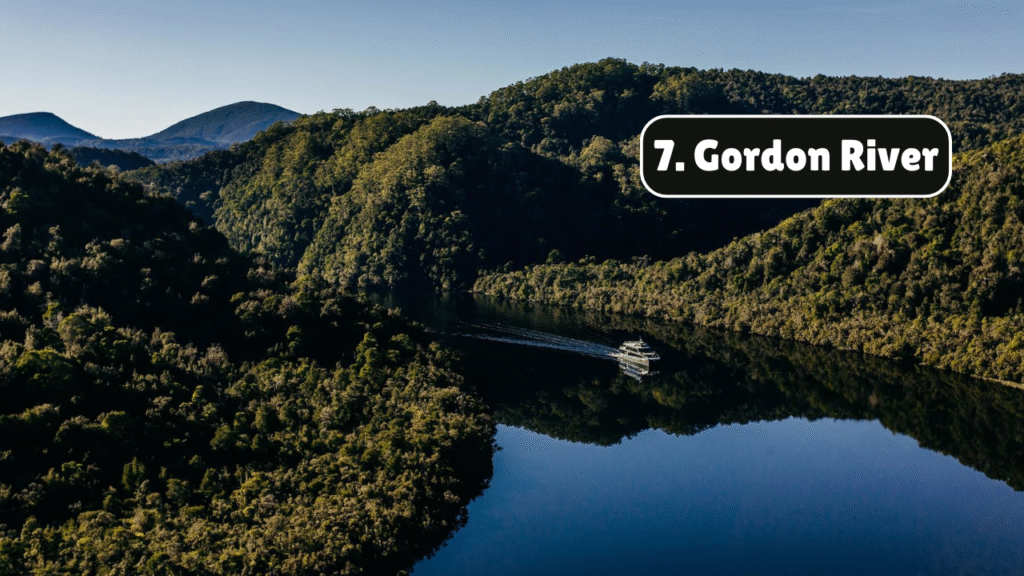
7. Gordon River
The Gordon River, located in the Franklin-Gordon Wild Rivers National Park, is one of Tasmania’s most scenic and remote wilderness areas. The river flows through dense rainforests and is surrounded by rugged mountains.
Key Features:
- Gordon River Cruises: Take a relaxing cruise through the river’s tranquil waters for amazing views of the surrounding wilderness.
- Hartz Mountains: Hike the nearby mountains for a stunning view of the river valley below.
- Wildlife: The river is home to platypuses and various bird species, including the rare orange-bellied parrot.
Tips:
- Book a guided tour or river cruise for the best experience.
- Bring a camera to capture the breathtaking landscape.
8. Cradle Mountain-Lake St Clair National Park
Another gem in the Cradle Mountain-Lake St Clair National Park, this area is known for its diverse ecosystems, ranging from glacial lakes to dense forests. It’s a hub for hikers, offering numerous trails that explore the park’s natural beauty.
Key Features:
- Lake St Clair: Australia’s deepest freshwater lake, surrounded by lush forest.
- The Shadow Lake Circuit: A 3-hour hike offering views of Cradle Mountain and tranquil waters.
- Wildlife: The park is home to wombats, echidnas, and a wide variety of bird species.
Tips:
- The park has excellent camping facilities for those who wish to experience the outdoors fully.
- Ideal for those looking for multi-day hikes in a stunning setting.
9. Mount Wellington
Just a short drive from Hobart, Mount Wellington offers panoramic views of the city, surrounding coastline, and beyond. The summit is often shrouded in mist, adding to its mystical atmosphere.
Key Features:
- Summit Views: The summit offers sweeping views of Hobart, the Derwent River, and the Tasmanian wilderness.
- Snow in Winter: Mount Wellington is a popular destination for snow sports during the winter months.
- Walking Tracks: There are various short and long hikes available, including the Pinnacle Track.
Tips:
- Dress warmly, as the weather can change rapidly at higher altitudes.
- The summit can be reached by car, but for the more adventurous, hiking is a great option.
10. Tarkine Wilderness
The Tarkine Wilderness is one of the largest temperate rainforests in the Southern Hemisphere, known for its ancient forests, pristine rivers, and stunning wildlife.
Key Features:
- Ancient Rainforests: The region is home to some of the oldest and most untouched rainforests on Earth.
- Hiking Trails: The Tarkine is ideal for those looking to immerse themselves in a truly wild environment.
- Wildlife: You may encounter the endangered orange-bellied parrot or the Tasmanian tiger.
Tips:
- It’s essential to explore the Tarkine with a guide due to the challenging terrain.
- Bring proper hiking equipment, especially if you plan to visit remote areas.
Table: Summary of Tasmania’s Top 10 Natural Attractions
| Attraction | Key Features | Wildlife Benefits |
|---|---|---|
| Cradle Mountain | Alpine scenery, Dove Lake, Overland Track | Wombats, wallabies, Tasmanian devil |
| Wineglass Bay | Crescent-shaped bay, Wineglass Bay Lookout | Sea eagles, wallabies |
| Tasman National Park | Coastal cliffs, Three Capes Track, Blowhole | Dolphins, seals, seabirds |
| Bay of Fires | Vibrant boulders, pristine beaches | Fairy wrens, oystercatchers |
| Mount Field National Park | Russell Falls, Lake Dobson | Pademelons, possums, native birds |
| Bruny Island | The Neck, Bruny Island Lighthouse | White wallabies, sea eagles |
| Gordon River | Gordon River Cruises, Hartz Mountains | Platypuses, orange-bellied parrot |
| Cradle Mountain-Lake St Clair NP | Glacial lakes, Shadow Lake Circuit | Wombats, echidnas, bird species |
| Mount Wellington | Summit views, Pinnacle Track | No specific wildlife |
| Tarkine Wilderness | Ancient rainforests, hiking trails | Endangered parrot, Tasmanian tiger |
Conclusion
Tasmania is a treasure trove of natural beauty, offering a vast array of landscapes to explore. From the towering peaks of Cradle Mountain to the pristine beaches of the Bay of Fires, each of these 10 must-do natural attractions showcases the island’s stunning diversity. Whether you’re a hiker, wildlife enthusiast, or someone who simply wants to relax in nature, Tasmania’s untouched beauty will captivate your soul. With its rich ecosystems, abundant wildlife, and pristine landscapes, Tasmania stands as one of the world’s premier eco-tourism destinations.
FAQs
1. What’s the best time to visit Tasmania for natural attractions?
The best time to visit is during the summer months (December to February) for mild weather and access to hiking trails. Autumn (March-April) is also a great time for vibrant foliage.
2. Can I see wildlife in Tasmania year-round?
Yes, Tasmania’s wildlife can be seen year-round, with different species being more active during certain seasons. Summer and spring are ideal for birdwatching.
3. Are there guided tours available for Tasmania’s natural attractions?
Yes, many of Tasmania’s national parks and wilderness areas offer guided tours, which are highly recommended for those unfamiliar with the terrain.
4. Is it possible to camp in these natural areas?
Yes, several parks, including Cradle Mountain and Mount Field, offer camping facilities for those looking to immerse themselves in nature.
5. How difficult are the hikes in Tasmania?
Tasmania offers a variety of hikes suitable for all fitness levels. From easy walks like the Russell Falls trail to challenging multi-day treks like the Overland Track, there’s something for everyone.
